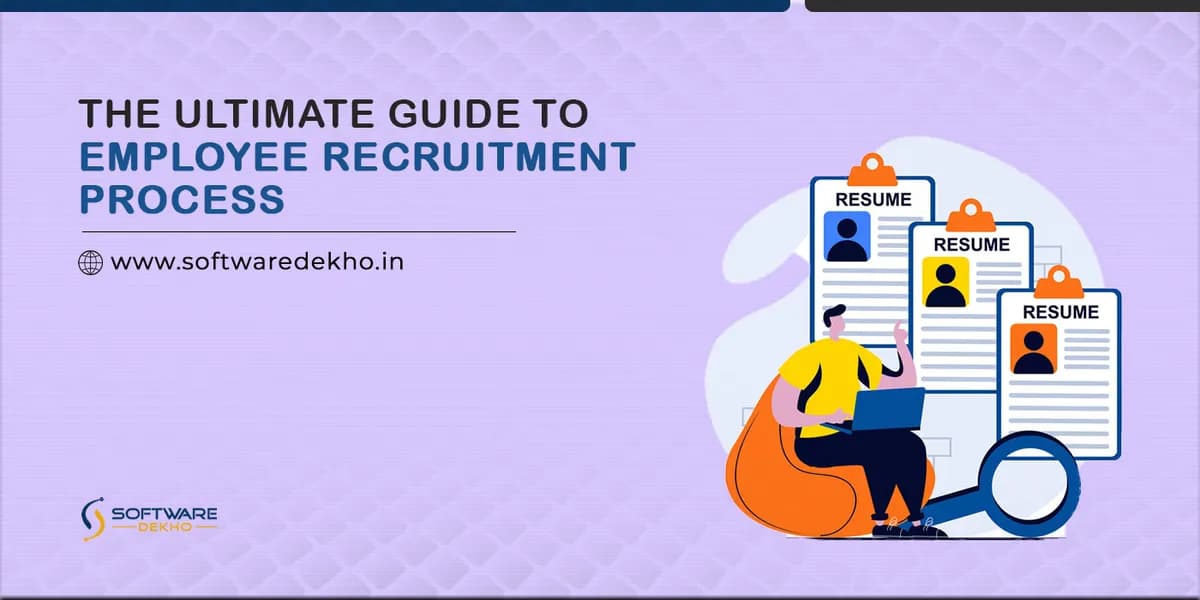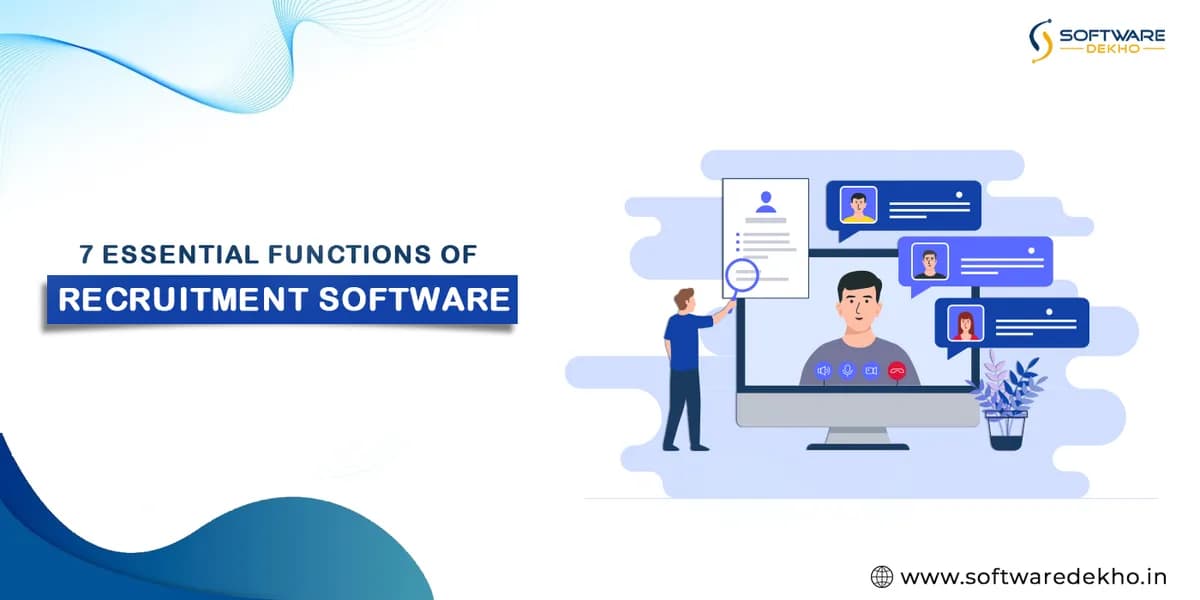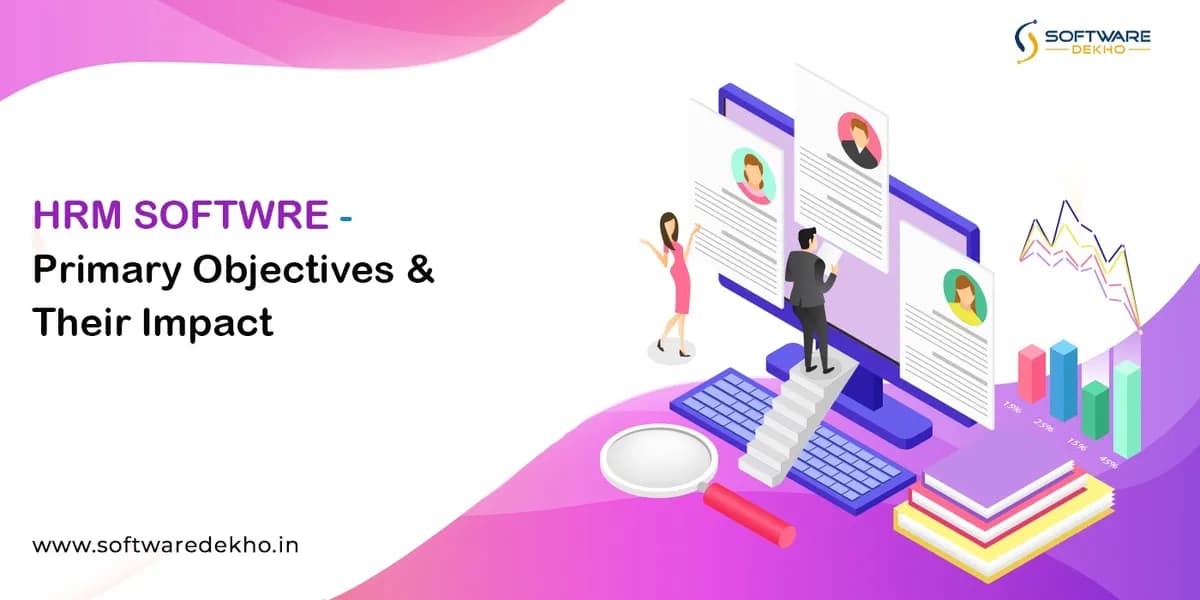The Ultimate Guide To Employee Recruitment Process
Assigning the right employee for a specific task is a crucial part of an organisation’s success. It is upon the Human resource department to understand the business requirements and find the perfect workforce. In this blog, we’ll discuss different stages, and types of recruitment process, and some factors affecting it.
What is the recruitment process?
Recruitment is a core function of the HR department. This process involves understanding the requirements, screening applications, interviewing, and everything needed to onboard employees into the company. Typically, small companies have a recruitment manager and others have a team of human resource department for it.
Hiring officials can rely on various things like ads, social media posts, job portals, etc., to recruit for new positions. Modern-day companies mostly rely on software solutions for the employee recruitment process. You can find several free and paid portals and software suites to customise and post job positions.
Stages of recruitment process
Building a dynamic and skilled workforce requires strategic approaches and proper planning. Each stage of the process plays a crucial role in identifying, selecting, and onboarding top talent into your company. These stages/steps for onboarding new talent are the same, irrespective of the tools used.
Let’s discuss the recruitment process stages in detail:
Understanding the requirements
The basic step to any recruitment is to first understand what the requirements are. This requires comprehensive workforce planning that goes beyond just filling the vacancies. Recruiting teams must assess the current staffing levels, forecast future needs, and comprehend the skills and expertise required for every role within the organisation. Align the hiring needs with your organisational goals to craft the best strategies.
Job description
Companies delve into a thorough job analysis once the hiring needs are clearly understood. A job description specifying responsibilities, qualifications, and expectations for potential candidates is created after careful analysis. Creating compelling job descriptions isn’t just a formality, but a strategy to attract suitable. It also sets clear expectations for both the employer and the applicants.
Candidate sourcing
Clearly understanding the requirements and creating appropriate job descriptions are followed by candidate sourcing. Companies can use various channels like social media, job boards, industry-specific platforms, etc. Build a proper talent pipeline to ensure a continuous flow of potential candidates for both immediate and future openings.
Screening
Screening and shortlisting phase is the most crucial part of the HR recruitment process. It involves CV and application reviewing to identify those meeting the initial criteria. Initial screenings often happen through phone or video interviews, helping employers select individuals for detailed assessments.
Interviews
Properly structured interviews are the key to assessing a candidate’s ability and sustainability for the role. Usually, these interviews involve discussions with the HR managers, team leads, key stakeholders, and the company hierarchy (when recruiting for managerial positions). These assessments provide a holistic view of the applicant, including their technical skills, cultural compatibility, etc.

Importance of a good recruitment process
An efficient process for selecting/recruiting the right talent is company-specific. It aims to find the right source at the right time for the right job. The main target is to attract the maximum number of job seekers to hire qualified candidates. This requires a proper understanding of the company requirements and appropriate planning to fill the roles.
Carefully crafting the whole process helps filter the exact candidates you are looking for. It also helps engage all the eligible ones to achieve maximum conversions. The HR recruitment process reflects your company’s professionalism and helps you find the correct fit at the same time.
Skill assessments
Skill assessments are often conducted by recruiters to ensure a candidate’s alignment with the job’s requirements. These assessments could be anything like forms, assignments, or simulations that evaluate practical abilities. This step is essential to ensure the candidate possesses the necessary skills required for the role.
Background checks
Contacting previous employers and references of an applicant is crucial to validate their credentials. In this phase, the recruiters can know the candidate’s work ethic, reliability, and performance insights. These are more like the final checks and confirmations of a candidate’s sustainability.
Offer and negotiations
The process moves to the offer and negotiation stage once you find the ideal candidate for your requirements. In this stage, recruiters present a competitive offer that aligns with the industry standards and the candidate’s expectations. Following this is the negotiations, a delicate yet essential stage of recruitment. Proper negotiations secure the candidate’s commitment to the role. Failing to do so would mean that you’ll have to restart the entire recruitment process again.
Onboarding
The final step of the recruitment journey is the onboarding process. Welcoming new hires and integrating them into the organisation is crucial for a smooth transition. Providing necessary training, resources, and information can help the new hires understand their role and responsibilities towards the company.
Types of recruitment process
Recruiters use diverse strategies to hire new people for their companies. However, it is the different types of recruitment process that shapes the workforce dynamics. Here are some common types that employers usually follow to fill the vacancies and add new members to the company.
Internal recruitment
Internal recruitments involve turning to the existing employees of the company to fill open positions. This involves promotions, transfers, and internal job postings. Internal recruitment boosts employee morale and promotes loyalty.
External recruitment
External recruitments involve hiring candidates from outside the organisation. Here, recruiters use different approaches and recruitment processes to onboard the best candidates to fill the vacancies. This promotes diversity within the workforce and provides access to a broader range of skill sets.
Online recruitment
This type of recruitment is where employers use digital platforms like social media, company websites, etc., to reach a global audience. It provides access to a vast number of candidates on the global level, providing numerous options to the companies.
Campus recruitment
This approach is used by companies to tap into the potential of fresh graduates. Companies establish partnerships with universities and conduct on-campus interviews to identify emerging talents. Campus recruitment helps fill entry-level positions and establish early connections with future professionals.
Employee referrals
This kind of recruitment process involves employees referring qualified candidates for open positions within the company. Employee referrals can help improve the hire quality through personal endorsements. It also boosts employee engagement and loyalty towards the company.
Recruitment agencies
Employers and recruiting managers turn to recruitment agencies at times, to find the best candidates. Such agencies provide access to a broader set of candidates. Organisations lacking internal sources or needing specialised expertise for specific roles can collaborate with recruitment agencies to fill vacancies.
Must Read - Difference Between ATS & Recruitment Software
Factors affecting recruitment process
Several factors influence a company’s preferences when hiring new people to join its workforce. Dynamic aspects like economic conditions, skill & market demands, etc., often challenge recruiters. Understanding such aspects can help overcome the roadblocks and craft a perfect recruitment plan for your company.
The following are some factors affecting the recruitment process in the present day:
Reputation
Your company’s reputation is the most critical influencing factor during recruitment. Employers with a positive brand and reputation are like magnets that attract high-caliber candidates. Positive employee experiences, social responsibility initiatives, ethical business practices, etc., build a strong positive reputation for a company.
On the flip side, a negative reputation coming from poor work culture, negative publicity, or anything else can ruin your chances. Retaining employees and hiring skilled candidates becomes the most difficult in such cases. Companies with a positive image are more likely to attract the best people for jobs and retain their top talent.
Economic conditions
Economic aspects of a region or country have both positive and negative impact on your recruitment. Chances of unemployment are prevalent when there is a negative impact on the economy. In that case, you have a larger pool of potential candidates waiting to grab new opportunities.
Likewise, there's intense competition for skilled professionals in the booming economies with the lowest rate of unemployment. This might be a little challenging for companies to hire and retain cream talents, as they have numerous options to negotiate.
Legal compliance
Adhering to the labour laws and the necessary regulations is a fundamental requirement for any organisation trying to onboard new employees. Compliance requirements include equal opportunities, fair wages, wowork hoursand other labour-related regulations. Organisations prioritising regulatory compliance depict their ethical conduct and improve trust among applicants.
Market demand
Any job requirement is highly influenced by the demand for specific skills. Companies are likely to face tough competition in industries with certain skills in high demand. This leads to a scarcity, requiring companies to offer better packages and benefits to attract the best. Recruiting officers must understand and comprehend the skill demands to stay ahead in the talent search.
Technology
Integrating different tools and technology like Applicant Tracking Systems (ATS), AI-powered screening tools, virtual interviews, etc., streamline the entire recruitment process. Using these enhances efficiency and reduces the time taken for candidate evaluation. Such technologies automate the entire process, help eliminate bias, and improve recruitment quality.
These are some of the several factors that influence your company’s methods to employ people. Other factors include company requirements, work location and timings, mode of work, etc.
Talent is the key, and identifying such talent requires proper knowledge. Hiring officials must know the exact requirements by the company, communicate the same with job seekers, and hire the best fit for the roles. Filling workforce vacancies is a journey that requires precision, proper strategies, and systematic approaches. Mastering the employee recruitment process is the best strategy you’ll need to secure the finest talent to fulfill your organisational goals.
You must conduct thorough research and read user reviews to choose the best software for your needs. So, take a look at our website to understand better!
Let's Talk about Software!







